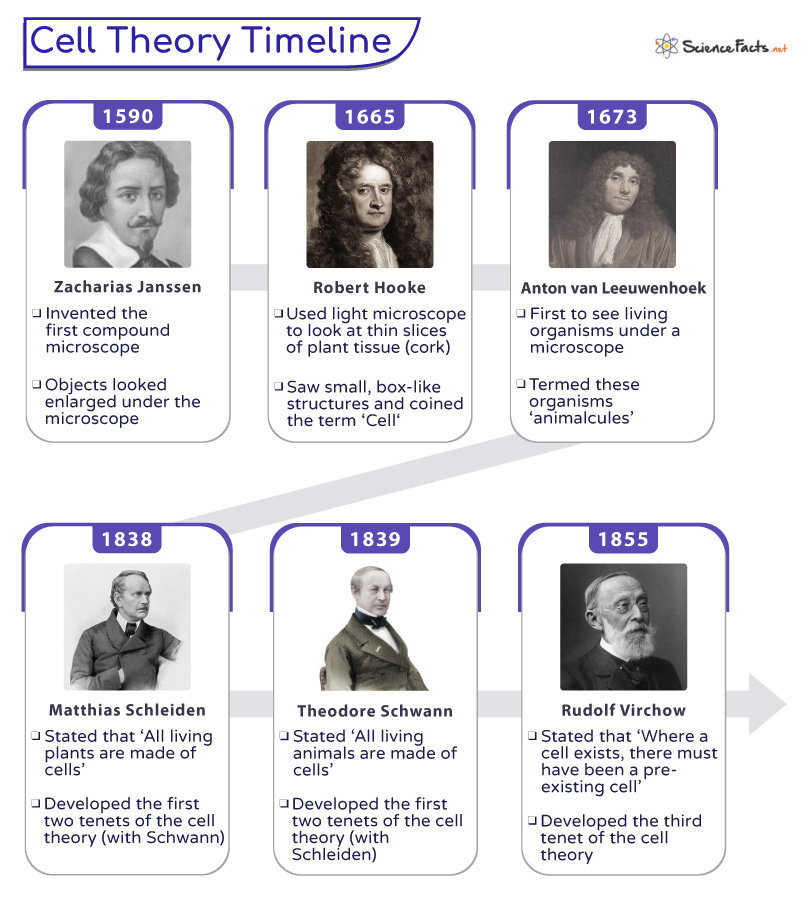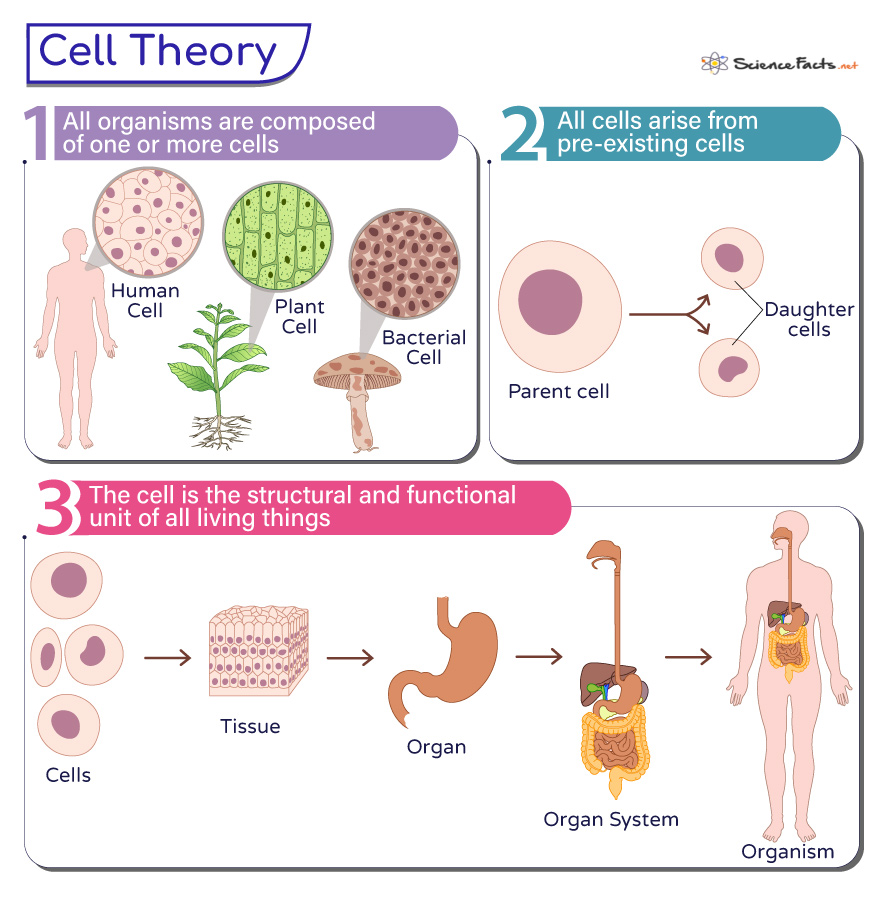Cell Theory
Our understanding of cells dates back to the discovery of the microscope, which led to the formulation of the cell theory.
Cell Theory in Timeline
- Cell discovery began in the 1600s when a Dutch shopkeeper, Antony van Leeuwenhoek, discovered simple lenses and used them to visualize single-celled organisms, which he collectively termed ‘animalcules.’
- The discovery of a compound optical microscope by Hans and Zacharias Janssen in 1590 made it even easier to observe and study cells.
- In 1665, an English scientist, Robert Hooke, observed a thin slice of cork under a microscope and published his observation in the book ‘Micrographia.’ He noticed small, box-like structures resembling the cells of a monastery and coined the term ‘cell.’ However, Hooke’s observations were limited to dead plant material, and he could not fully comprehend the significance of what he had seen.
- In the early 19th century, Matthias Schleiden, a German botanist, studied plant tissues and proposed that all plants are composed of cells. He postulated that cells were the fundamental building blocks of plants, responsible for their growth and development. Schleiden’s work laid the foundation for the idea that cells play a vital role in the structure and function of living organisms.
- Around the same time, Theodor Schwann, a German physiologist, conducted extensive studies on animal tissues. He observed that animal tissues were also composed of cells, similar to what Schleiden had discovered in plants. Schwann concluded that all living organisms, plants, and animals, were made up of cells. This realization was a crucial step toward the formulation of the cell theory.
The image below shows a detailed timeline that led to the discovery of cell and the cell theory:
The Three Parts of the Cell Theory
According to the conclusions made by Schleiden and Schwann in 1838, it was proposed that:
- All living things are composed of one or more cells.
- The cell is the structural and functional unit of all living things.
However, Schleiden’s theory of spontaneous cell formation was later disapproved by Rudolf Virchow in 1855. He instead stated, ‘Omnis cellula e cellula,’ meaning ‘All cells only arise from pre-existing cells.’ which is included as the third part of the cell theory.
Thus, combining the contributions of Schleiden, Schwann, and Virchow, the traditional cell theory has three tenets. It states that:
- All organisms are composed of one or more cells
- The cell is the structural and functional unit of all living things
- All cells only arise from pre-existing cells
Modern Cell Theory
Since the formation of classical cell theory, further studies on cells with the advancement of microscope have led to the formation of the modern cell theory, which has three main additions:
- Genetic material (DNA) is passed on from one cell to another during cell division
- All cells have the same basic chemical composition
- Energy flow occurs within cells
Why is the Cell Theory Important
Cell theory transformed scientists’ understanding of living organisms’ makeup, providing a unifying framework for studying the different life forms. Its significance lies in its ability to guide research, enable medical advancements, shed light on evolutionary relationships, drive biotechnological innovations, and contribute to ecological and environmental studies.
The cell theory has transformed our understanding of biology by recognizing the cell as the fundamental unit of life. It continues to shape scientific progress in numerous fields.
-
References
Article was last reviewed on Thursday, July 27, 2023





